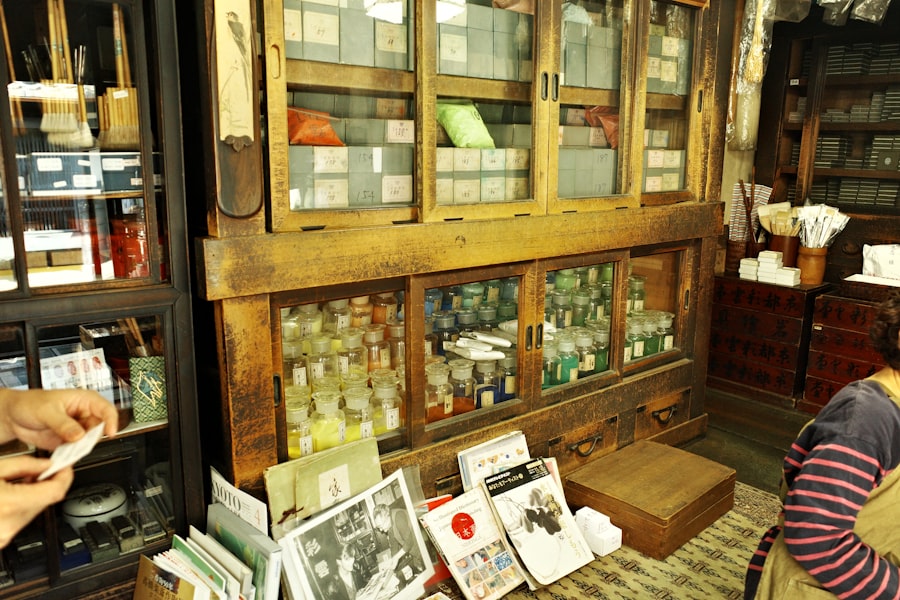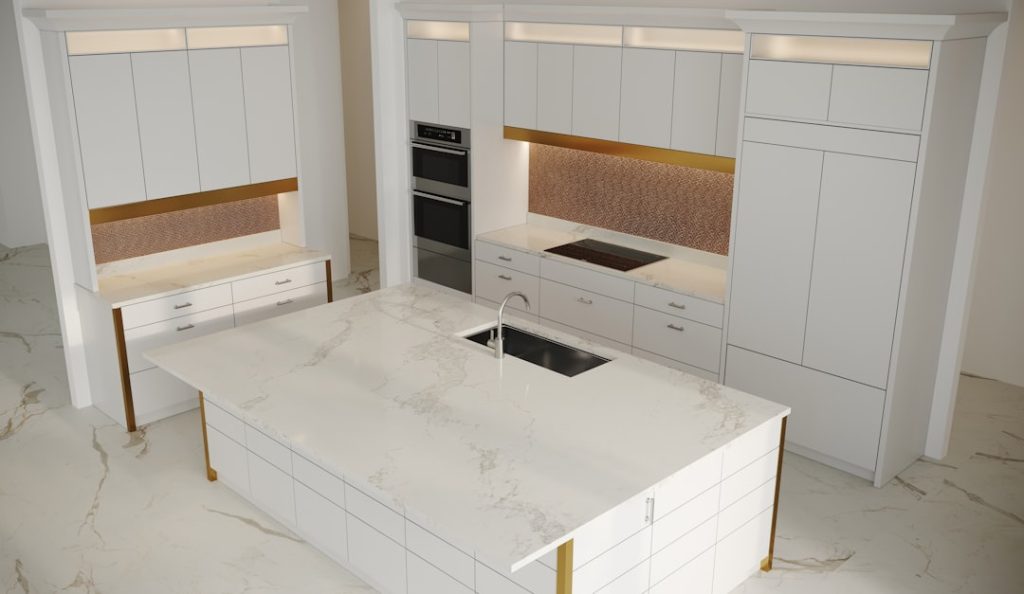Custom cabinets play a pivotal role in both the functionality and aesthetics of a home. Unlike stock cabinets, which are mass-produced and often lack the unique characteristics that reflect personal style, custom cabinets are tailored to meet specific needs and preferences. This bespoke approach allows homeowners to maximize their space efficiently, ensuring that every inch is utilized effectively.
For instance, in a small kitchen, custom cabinets can be designed to fit awkward corners or to include specialized storage solutions, such as pull-out shelves or built-in spice racks, which can significantly enhance usability. Moreover, the importance of custom cabinets extends beyond mere functionality. They serve as a statement piece within a home, contributing to the overall design narrative.
The choice of materials, finishes, and hardware can dramatically influence the ambiance of a room. For example, a sleek, modern kitchen with high-gloss cabinetry can evoke a sense of sophistication, while rustic wooden cabinets can create a warm, inviting atmosphere. This ability to customize not only elevates the visual appeal of a space but also adds value to the property, making it an attractive option for potential buyers in the future.
Key Takeaways
- Custom cabinets are important for maximizing space, improving functionality, and enhancing the overall aesthetic of a space.
- When choosing custom cabinets, consider factors such as material, style, hardware, and functionality to ensure they meet your specific needs and preferences.
- Research local custom cabinet makers to find the best options for your project, considering factors such as reputation, portfolio, and customer reviews.
- Compare different custom cabinet design options to find the best fit for your space, taking into account factors such as layout, storage needs, and design aesthetics.
- Budgeting for custom cabinets involves considering the cost of materials, labor, and any additional features or customization, while also leaving room for unexpected expenses.
Factors to Consider When Choosing Custom Cabinets
When embarking on the journey to select custom cabinets, several critical factors must be taken into account. First and foremost is the material selection. The choice of wood or composite materials can significantly impact both durability and aesthetics.
Hardwoods like oak, maple, and cherry are popular for their strength and timeless beauty, while engineered materials like plywood or MDF offer cost-effective alternatives that can still provide excellent finishes. Understanding the pros and cons of each material is essential for making an informed decision that aligns with both budget and design goals. Another vital consideration is the cabinet style and design.
Homeowners should think about how the cabinets will complement existing decor and architectural features. For instance, traditional homes may benefit from ornate details and classic finishes, while contemporary spaces might call for clean lines and minimalist designs. Additionally, functionality should not be overlooked; the layout of cabinets should facilitate ease of use and accessibility.
Features such as soft-close hinges, adjustable shelving, and integrated lighting can enhance both the practicality and enjoyment of custom cabinetry.
Researching the Best Custom Cabinet Makers Near Me

Finding the right custom cabinet maker is crucial to achieving the desired outcome for your project. Start by conducting thorough research within your local area. Online platforms such as Yelp or Houzz can provide valuable insights into customer reviews and ratings for various cabinet makers.
Additionally, visiting local home improvement stores or design centers can yield recommendations from professionals who are familiar with reputable craftsmen in your vicinity. Once you have compiled a list of potential cabinet makers, it’s essential to evaluate their portfolios. A well-established cabinet maker will have a diverse range of completed projects that showcase their craftsmanship and design capabilities.
Pay attention to the quality of materials used, the precision of construction, and the overall aesthetic appeal of their work. It’s also beneficial to schedule consultations with a few selected makers to discuss your vision and gauge their responsiveness and willingness to collaborate on your ideas.
Comparing Custom Cabinet Design Options
| Design Options | Cost | Lead Time | Customization |
|---|---|---|---|
| Stock Cabinets | Low | Short | Limited |
| Semi-Custom Cabinets | Medium | Medium | More options |
| Custom Cabinets | High | Long | Highly customizable |
The design phase is where creativity meets practicality in custom cabinetry. Homeowners should explore various design options that align with their personal style while also considering functionality. One popular trend is the incorporation of open shelving alongside traditional cabinet doors.
This hybrid approach allows for decorative displays while maintaining storage efficiency. Additionally, glass-front cabinets can add an element of elegance and transparency, making spaces feel more open. Another aspect to consider is the finish and color palette of the cabinets.
The choice between painted finishes versus stained wood can dramatically alter the look of a room. Painted cabinets offer a modern touch and can be customized in virtually any color, while stained wood showcases natural grain patterns and textures that add warmth. Furthermore, hardware selection—such as knobs and pulls—can serve as an accent that ties together the overall design theme.
Exploring these options thoroughly will ensure that the final product not only meets functional needs but also resonates with personal style.
Budgeting for Custom Cabinets
Budgeting for custom cabinets requires careful planning and consideration of various factors that contribute to overall costs. The first step is to establish a realistic budget based on your financial situation and project scope. Custom cabinetry typically comes at a premium compared to stock options due to the personalized nature of the work involved.
It’s essential to account for materials, labor, design fees, and any additional features you may want to incorporate. To manage costs effectively, prioritize your needs versus wants. For instance, if high-quality materials are essential for durability, you might consider compromising on less critical aspects like intricate detailing or specialized hardware.
Additionally, obtaining multiple quotes from different cabinet makers can provide insight into market rates and help identify competitive pricing. Remember that investing in quality custom cabinets can yield long-term benefits in terms of durability and aesthetic appeal, making it a worthwhile expenditure.
The Process of Custom Cabinet Installation

The installation process for custom cabinets is a critical phase that requires precision and expertise. Once the design has been finalized and materials selected, the cabinet maker will typically begin by crafting each piece in their workshop before scheduling an installation date. This pre-fabrication allows for greater control over quality and ensures that all components fit together seamlessly upon arrival at your home.
During installation, it’s essential to prepare the space adequately. This may involve clearing out existing cabinetry or furniture to create a clean working environment. Professional installers will carefully measure and level each cabinet to ensure proper alignment and functionality.
They will also address any necessary adjustments on-site to accommodate unique architectural features or irregularities in wall structures. A well-executed installation not only enhances the visual appeal but also ensures that the cabinets function as intended for years to come.
Maintaining and Caring for Custom Cabinets
Proper maintenance is key to preserving the beauty and functionality of custom cabinets over time. Regular cleaning is essential; using a soft cloth with mild soap and water can help remove dust and grime without damaging finishes. Avoid harsh chemicals or abrasive cleaners that could scratch surfaces or strip away protective coatings.
For wooden cabinets, periodic application of furniture polish or wax can enhance shine while providing an additional layer of protection against wear. In addition to routine cleaning, homeowners should be vigilant about addressing any signs of damage promptly. This includes tightening loose hardware, repairing scratches or dents, and ensuring that hinges remain functional.
For painted finishes, touch-up paint may be necessary to maintain a pristine appearance over time. By implementing these maintenance practices, homeowners can extend the lifespan of their custom cabinets while keeping them looking fresh and inviting.
Finding the Best Deals and Discounts on Custom Cabinets
While custom cabinets are often viewed as a luxury investment, there are strategies to find deals and discounts that make them more accessible. One effective approach is to shop during off-peak seasons when demand is lower; many cabinet makers may offer promotions or discounts during these times to attract business. Additionally, keeping an eye out for local home shows or expos can provide opportunities to connect with manufacturers who may offer special pricing for attendees.
Another avenue for savings is exploring financing options or payment plans offered by some cabinet makers. This can make it easier to manage costs without compromising on quality or design choices. Furthermore, consider discussing your budget openly with potential cabinet makers; they may be able to suggest alternative materials or design modifications that align with your financial constraints while still delivering a beautiful end product.
By being proactive in your search for deals, you can achieve your dream cabinetry without breaking the bank.



